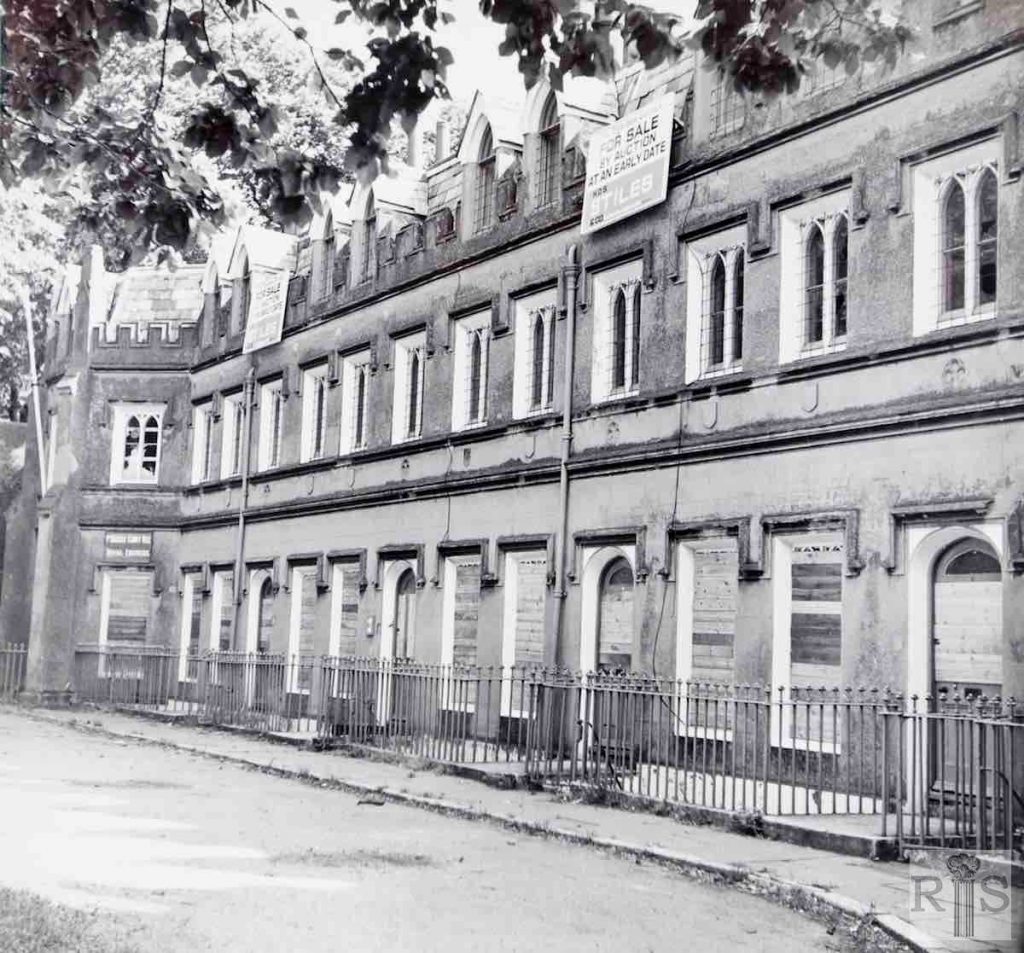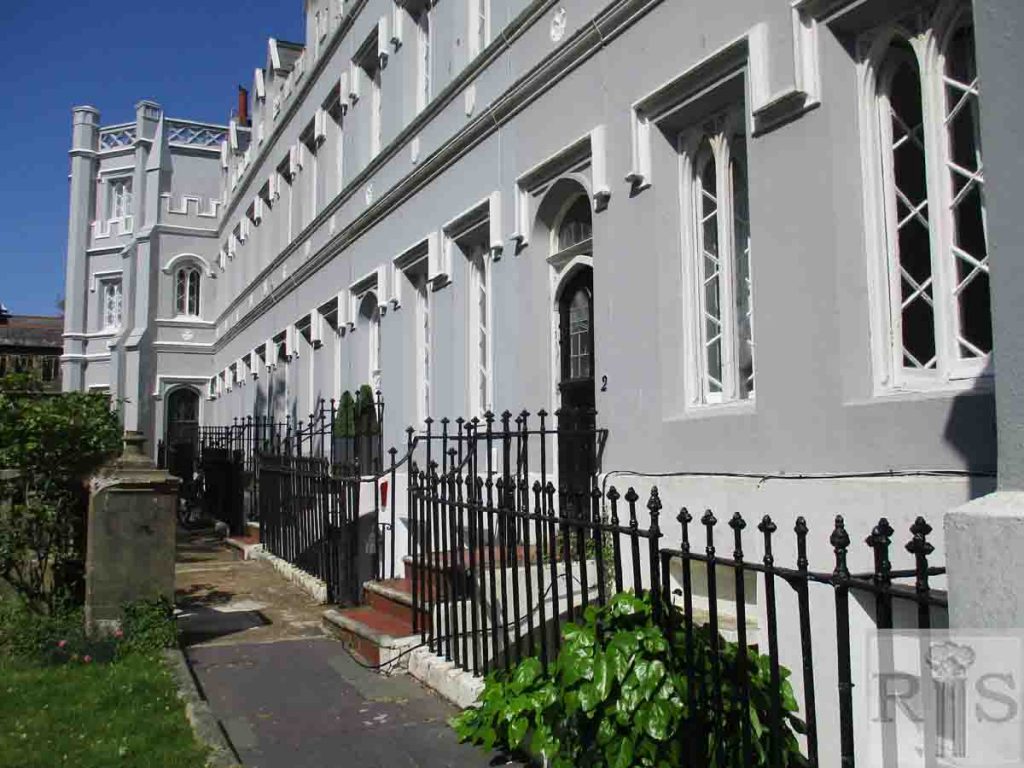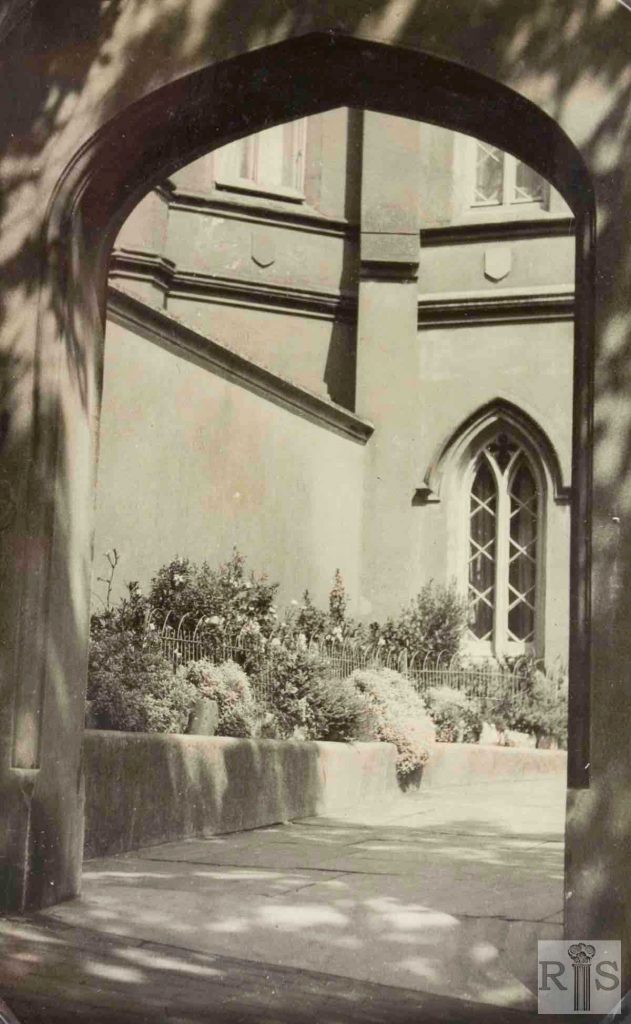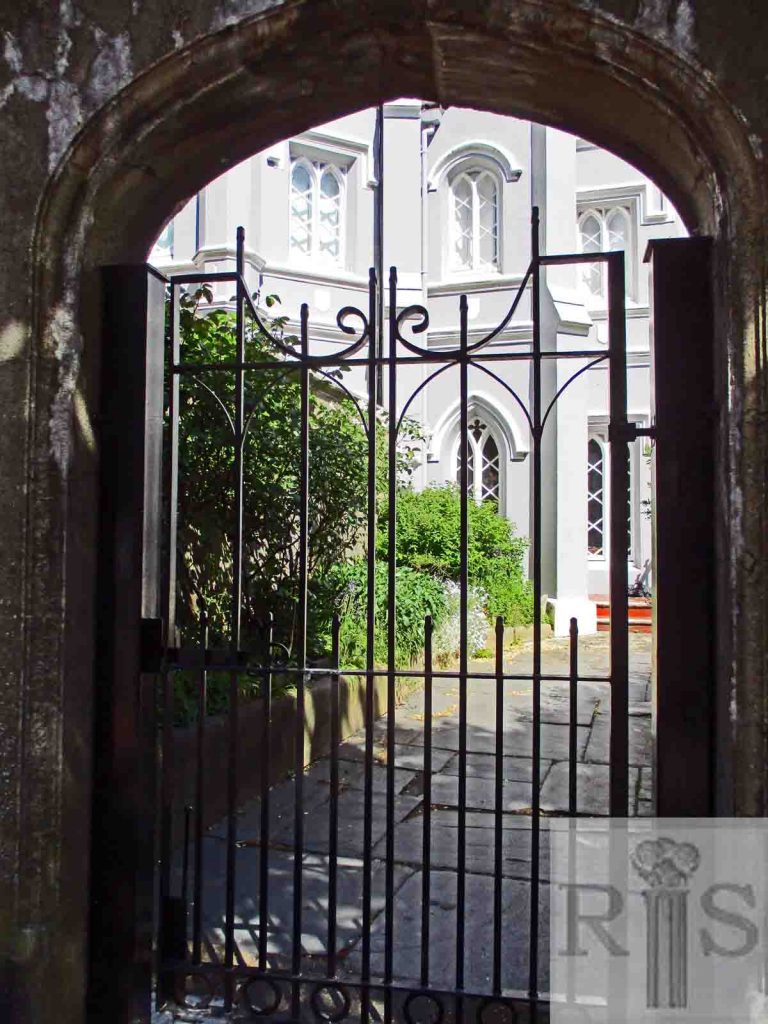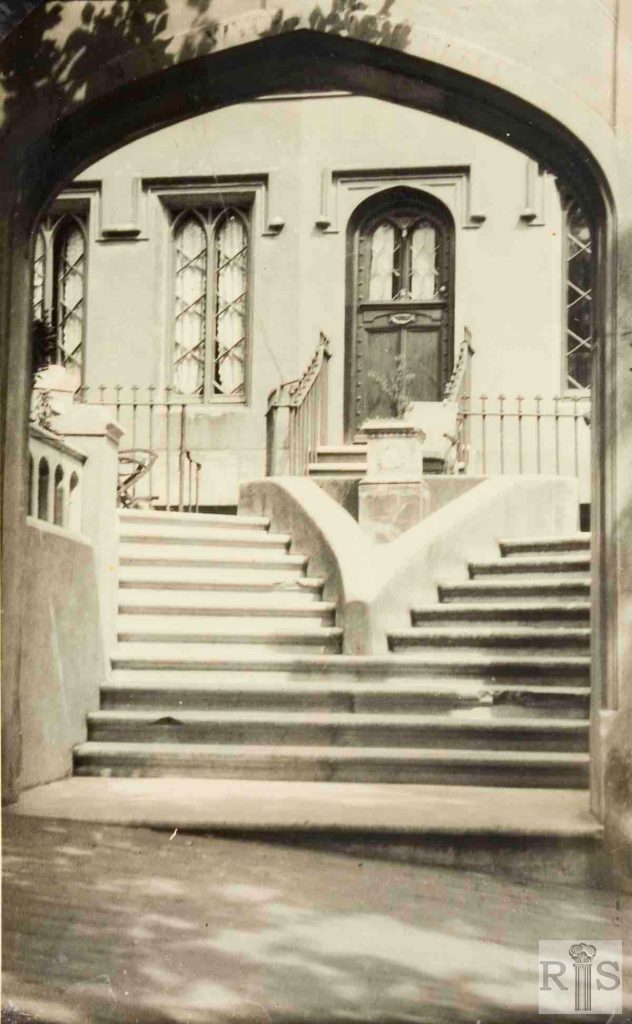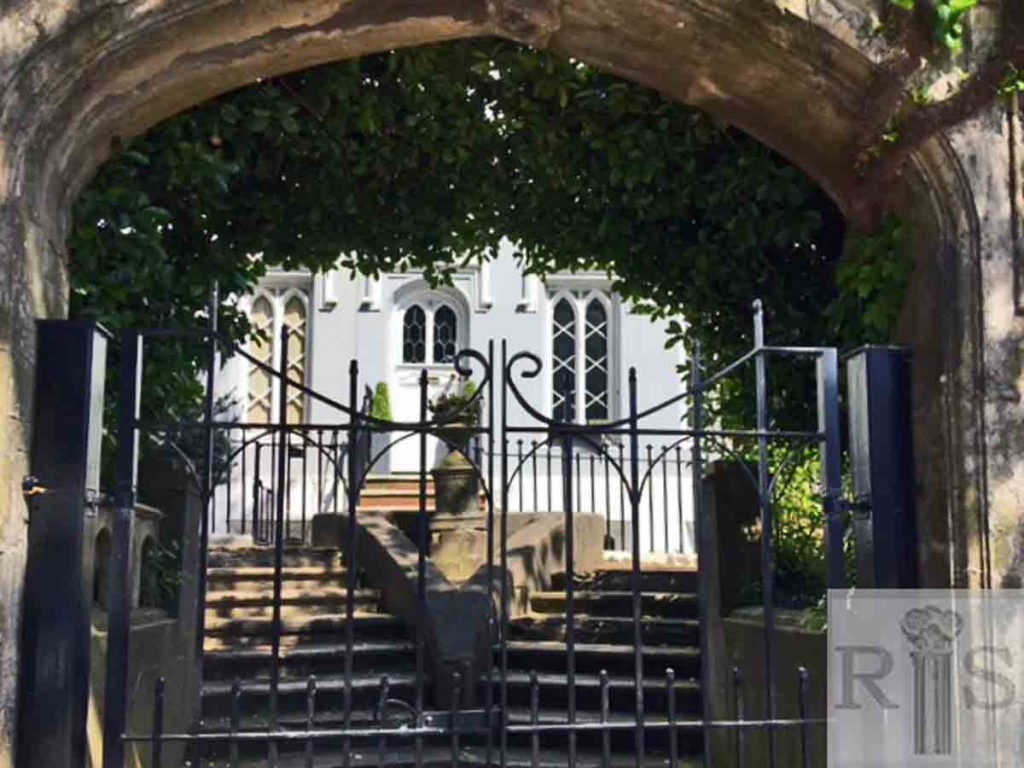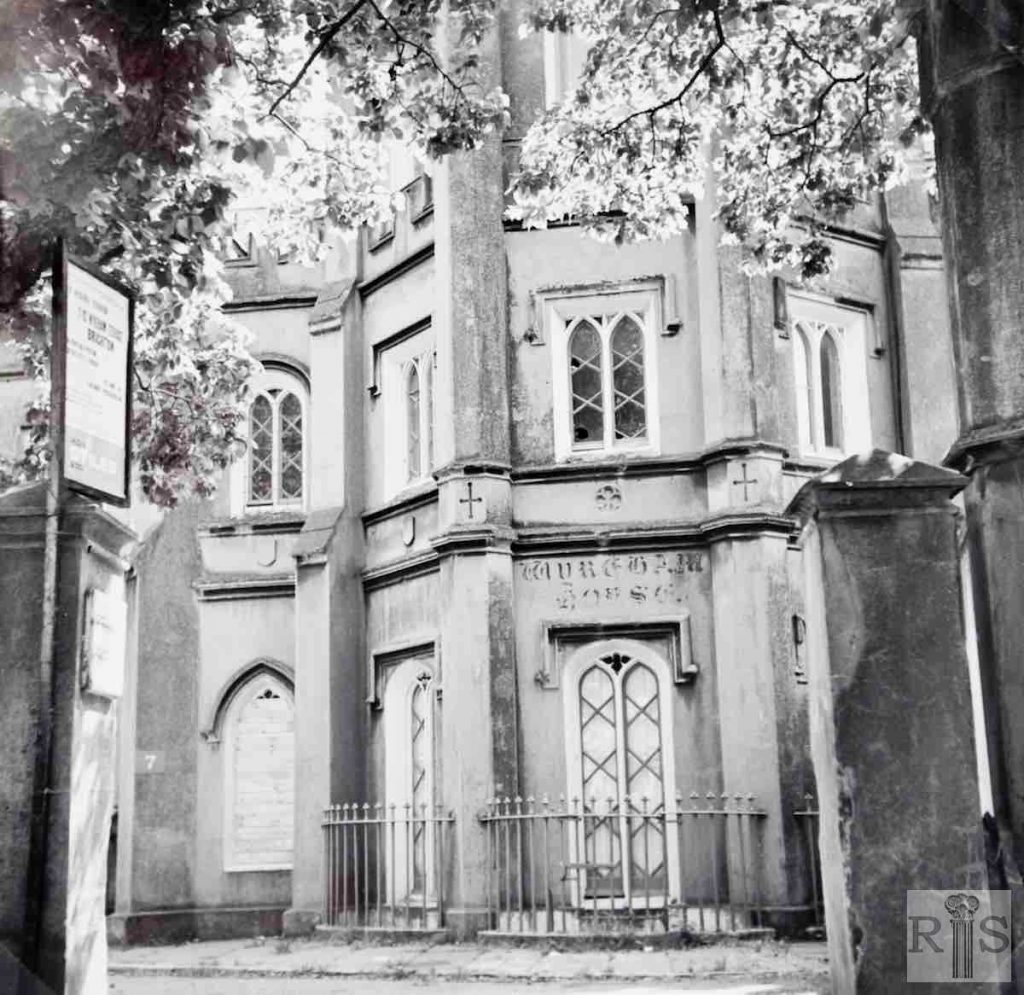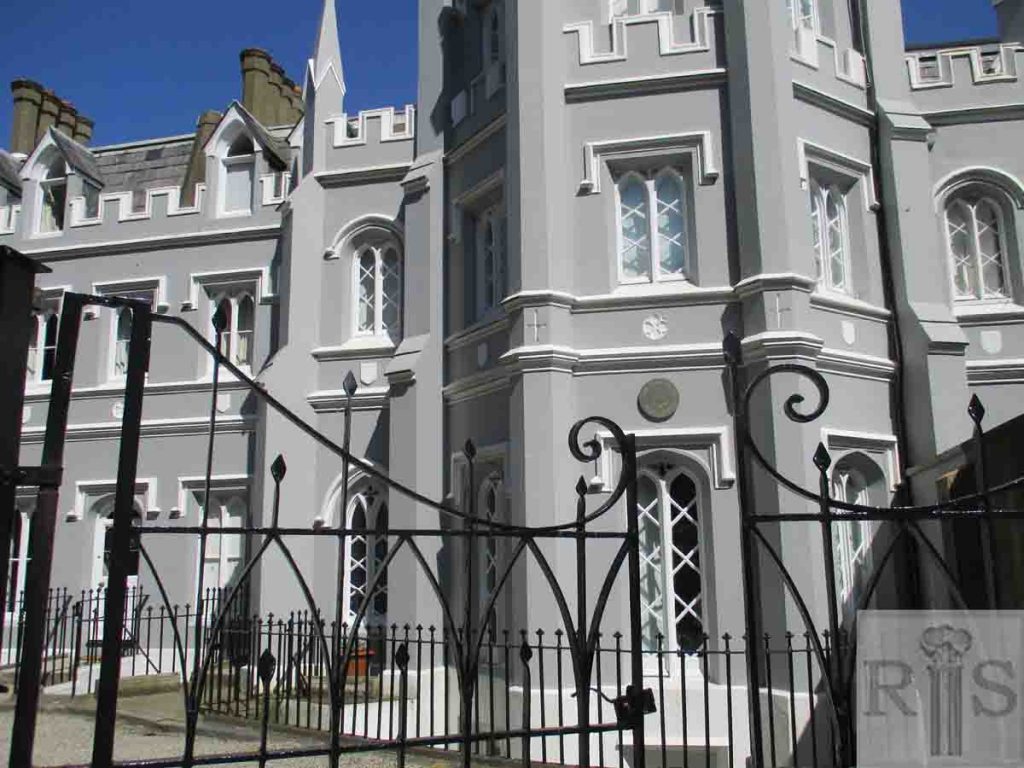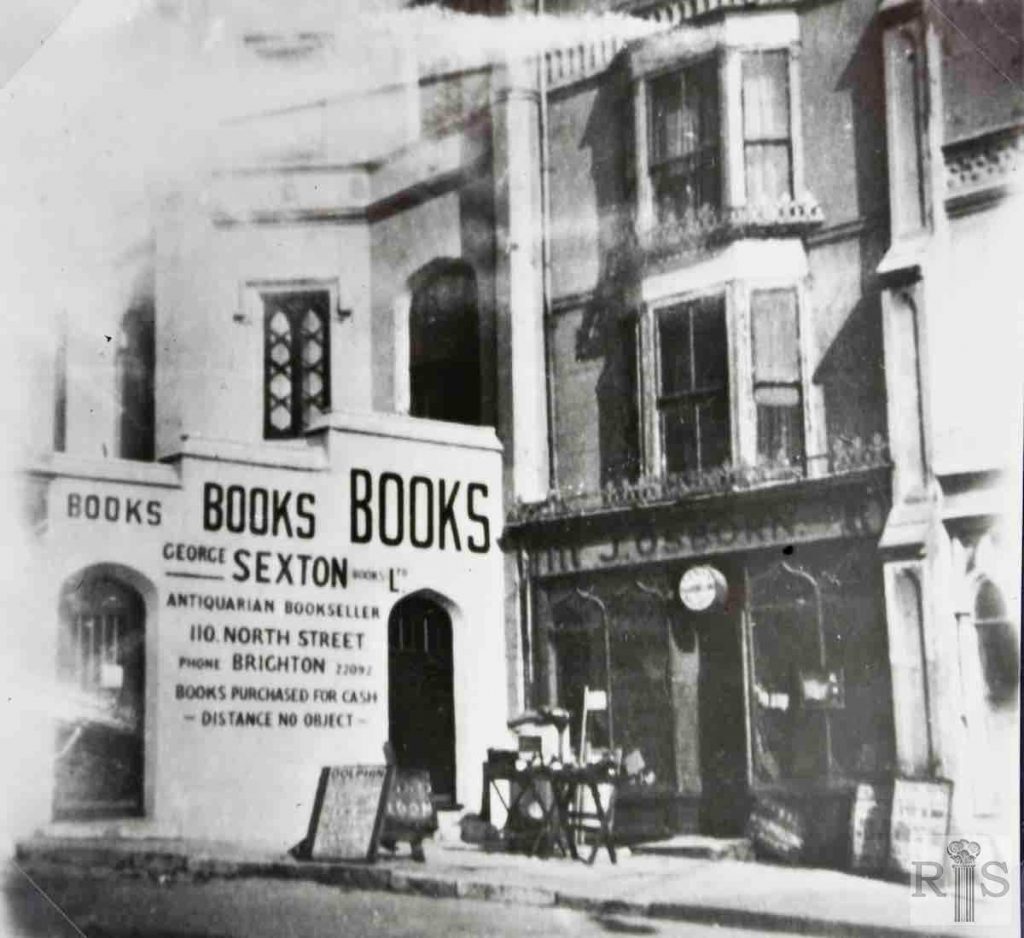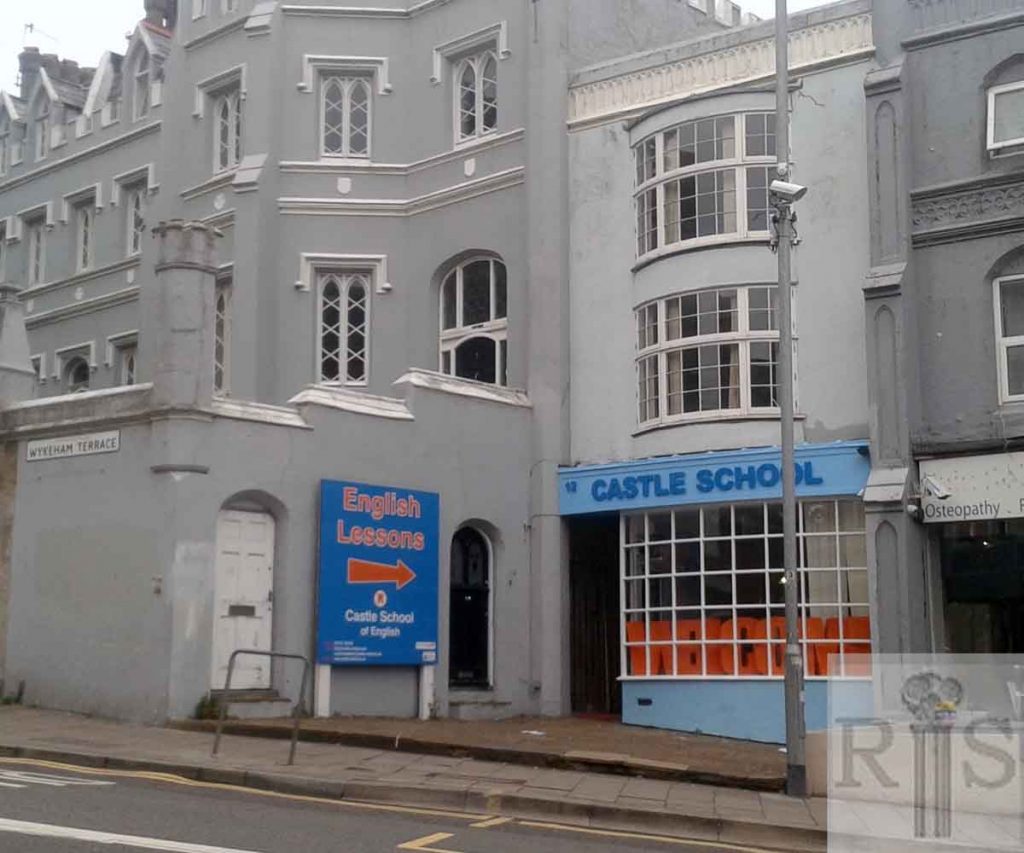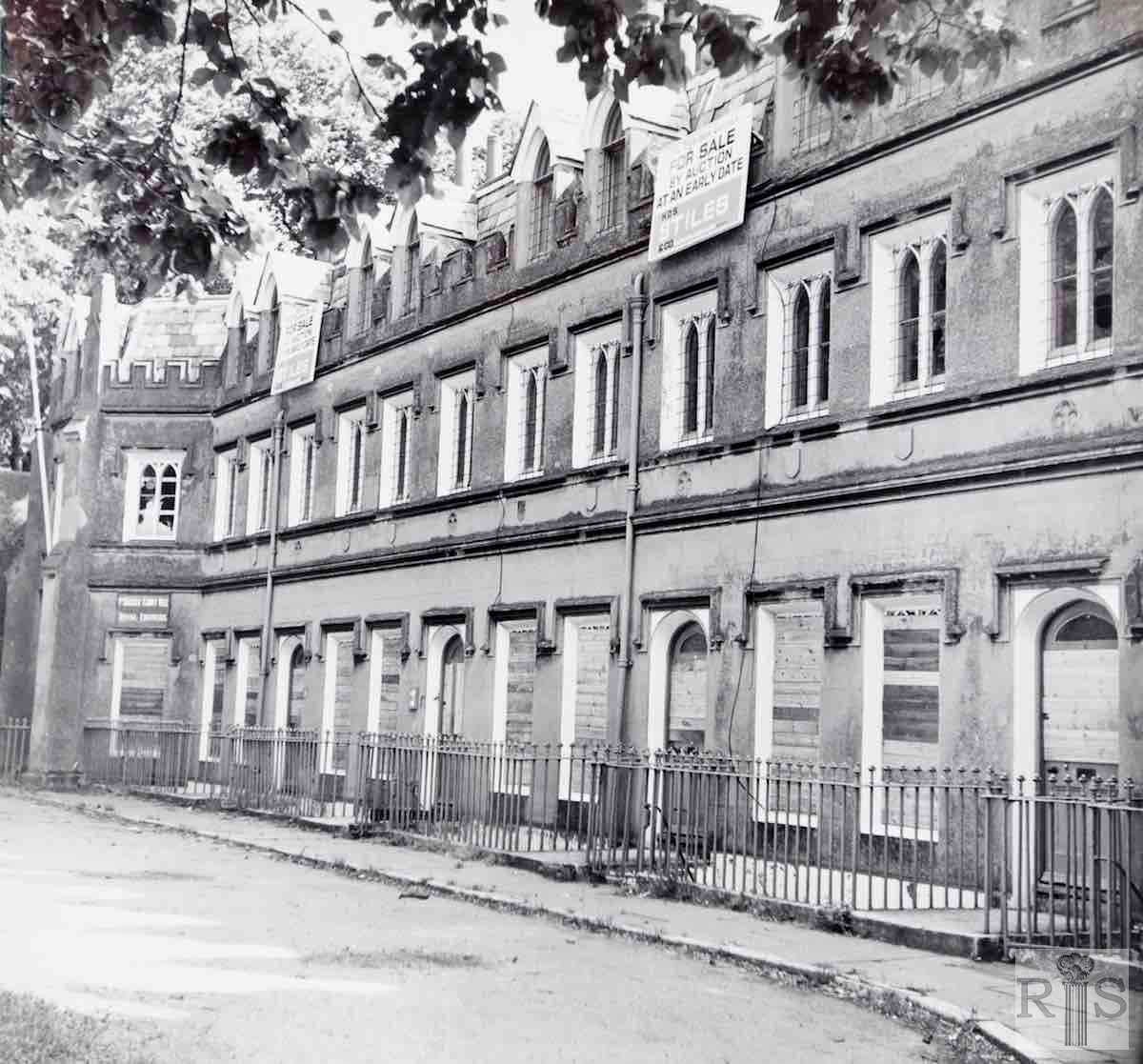
James Gray: These photographs of this mid-Victorian gothic terrace were taken on 29 June 1969, when the fate of these houses was uncertain. After being relinquished by the Military, they had been empty for some time, and were then invaded by the squatters. The houses steadily deteriorated, but when the squatters were evicted they were boarded up and made secure, before being put on the market. jgc_26_259
2018: The terrace has long since been refurbished and is a mix of houses and flats. Grade II-listed and built as houses between 1822 and 1830, by the mid nineteenth century much of the terrace had become St Mary’s Home, where former prostitutes were housed along with the elderly, disabled and poor, orphaned and destitute children, and remained so for some 60 years. The terrace was later used as housing by the Territorial Army and was briefly occupied by squatters before being sold in the late 1960s to a developer. (Photographer: Helen Glass)
James Gray: These photographs of this mid-Victorian gothic terrace were taken on 29 June 1969, when the fate of these houses was uncertain. After being relinquished by the Military, they had been empty for some time, and were then invaded by the squatters. The houses steadily deteriorated, but when the squatters were evicted, they were boarded up and made secure, before being put on the market. jgc_26_257
2018: The terrace has long since been refurbished and, as this photograph shows, refurbishment continues. See also caption jgc_26_259. (Photographer: Helen Glass)
James Gray: This photograph was taken some 39 years previously, in August 1930, and shows one of the windows of No.6, to the south of the high dividing wall. Built about 1840, the terrace comprised twelve individually occupied private dwelling houses, but by the 1860s most of these had been taken over by St Mary’s Home, a female Penitentiary, with headquarters in Queens Square, just behind. It is probable that some of the buildings had intercommunication. St Mary’s Home was connected with St Paul’s Church in West Street. jgc_26_258.
2018: The terrace has long since been refurbished. The view through the gateway is virtually unchanged from that seen in the 1930 photograph alongside, save for the addition of metal gates. See also caption jgc_26_259. (Photographer: Helen Glass)
James Gray: Another photograph of August, 1930, showing the steps on either side of the doorway of No.3 further down towards the Clock Tower. St Mary’s Home continued here for more than 60 years, until the changed social condition after the Great War led to a running down, so that in 1925 the Wykeham Terrace houses were given up and were again occupied as private houses. Later many were occupied by the permanent staff instructors at the Royal Engineer’s T A Drill Hall in Queen Square. This lasted for forty years until the late 1960s, when the military left and the squatters moved in. jgc_26_261.
2018: The terrace has long since been refurbished. The view through the gateway to No 3 is essentially unaltered, although the door has been painted white and the pedestal is now topped by an urn. Metal entrance gates have also been added. See also caption jgc_26_259. (Photographer: Helen Glass)
James Gray: No.7 seen through the pillared and arched entranceway. Another photograph taken on 29 June 1969. jgc_26_262.
2018: The view is virtually unchanged although the gothic lettering over the ground floor window has been replaced with a plaque commemorating a former resident, actress Dame Flora Robson. In addition, metal entrance gates have been added and the railings immediately in front of the house, although in the same style as in the James Gray photograph, have been extended and are in a different position. See also caption jgc_26_259. (Photographer: Helen Glass)
James Gray: Old houses at the foot of Dyke Road, period not known. They were then numbered 110 and 111, North Street, but were renumbered 14 and 12, Dyke Road. Both Sextons and John Osborn were here for long periods, particularly the latter whose hairdressing saloon spanned three decades (1920s – 1950s). The buildings are still here but altered in appearance. jgc_26_227
2018: The shop that housed the hairdressing salon of John Osborn at 12 Dyke Road is now a language school. The windows and shop front have been restyled. The black door at right angles to the language school is that of 14 Dyke Road, former premises of George Sexton, antiquarian bookseller. What now lies behind this door is a mystery. Wykeham Terrace seen to the left in both images is unchanged. (Photographer: Mathia Davies)
